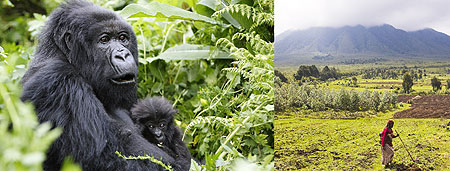Environment is a popular theme of discussion these days in numerous seminars, workshops and conferences. The environment is everything that surrounds us; it is made of human beings, animals, air, water, soil, plants and forests, buildings, factories, et cetera.


Environment is a popular theme of discussion these days in numerous seminars, workshops and conferences.
The environment is everything that surrounds us; it is made of human beings, animals, air, water, soil, plants and forests, buildings, factories, et cetera.
Not only does man live and depend on the environment, he also is part of that environment.
Man’s role in the environment
There is a very strong relationship between man and the environment. Human life in particular, but also living organisms in general, depend on their environment.
The environment provides life sustaining conditions and elements such as: air, water, soil, sources of energy and climate. Without those elements and conditions provided by the environment, life on Earth would not be possible.
On the other hand, man affects his environment by exploiting its resources for his livelihood. As a result, the strong relationship between man and the environment is both mutually beneficial and detrimental.
This implies that the environment is a complex system made of many elements: biological, chemical, physical and socio-economic elements and factors.
All these elements and conditions interact, react and affect each other. This only proves that our environment is a biology-chemistry-physics laboratory. All the ingredients of a science laboratory are present in our environment.
That is why all kinds of phenomena and reactions are found in the environment, for example: Physical phenomena such as evaporation, condensation, moving air (wind), mechanic forces (such as friction) and kinetic forces (such as water falls).
Biological phenomena such as living organisms and their metabolism, their growth and reproduction, their death and decomposition and, Chemical reactions such as acid rain, metal rusting, ozone formation and destruction, destruction of civil works by chemicals, formation of greenhouse gases.
The chemical aspect
By expounding on the chemical aspect of the environment, it’s easier to understand the laboratory aspect of the environment. For instance, the phenomenon of metal rusting as a costly environmental problem resulting from a chemical reaction after metal, water and oxygen combines.
If a piece of metal is in a humid environment, all the ingredients necessary for the reaction (metal, water, oxygen present in air) are present to start the to form rust.
The presence of acidic vapors in that environment will accelerate the reaction. Usually a chemical reaction is characterized by its mechanism and its rate. The rate of a reaction indicates how fast or slow it is.
Some reactions can take only seconds or a fraction of a second while others can take, hours, months and years. There are some parameters which help in studying a chemical reaction, these include; temperature, pressure, concentrations of the reactants, catalysts that accelerate the rate of the reaction and inhibitors that slow down or stop.
Another aspect to consider is the fact that a reaction which involves more than three reactants is always difficult to study.
Maintaining the natural laboratory
Environmental reactions are affected by the same parameters as in a normal chemistry laboratory. But the difference resides in the fact that in the natural environmental laboratory, we are not able to control those parameters.
They are continuously and simultaneously changing. For example the temperature may rise for a certain time and decrease at another time, the concentration of different gases keep changing and new chemicals keep coming in, many chemical species (generally more than 2) are involved.
This makes difficult the study of chemical reactions which take place in our environment.
Such a situation makes it difficult to predict and foresee with exactitude the outcome of the chemical reactions that take place in the environment.
Also, the study of environmental chemistry is done through computer modeling, whereby a combination is done of all parameters that affect a chemical reaction, hence simulating the environmental conditions, to see the effects.
This simulation does not give the real environmental conditions and is the source of some conflicting points of view between environmentalists and industrialists.
Nevertheless, the results of these computer models give good and fairly reliable predictions on the environment that should be seriously considered.
The author is a Senior Lecturer at KIE.


